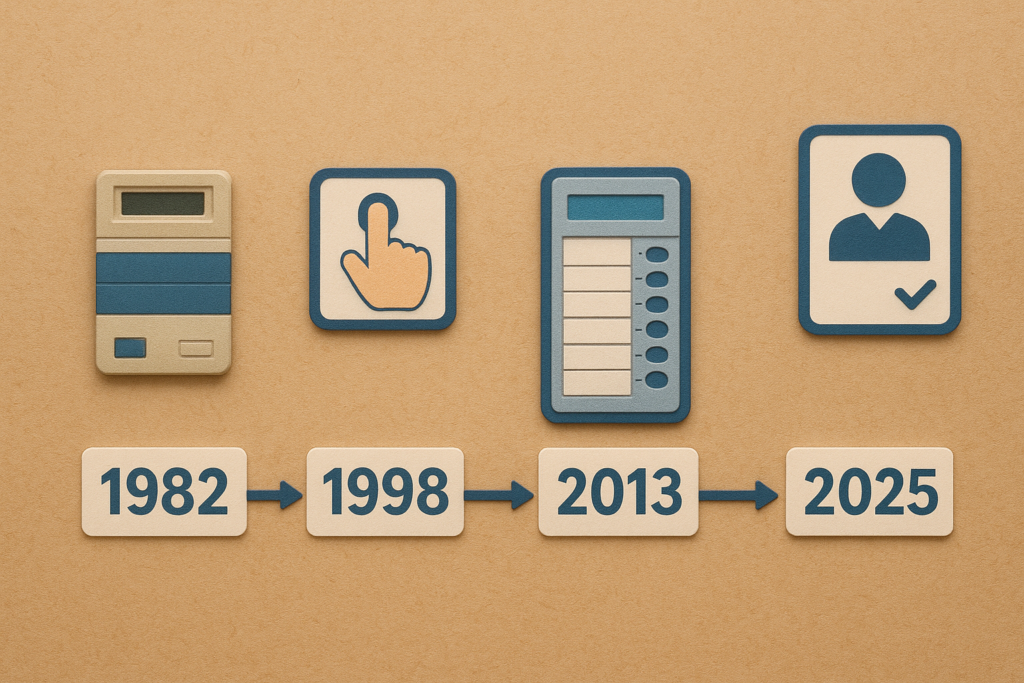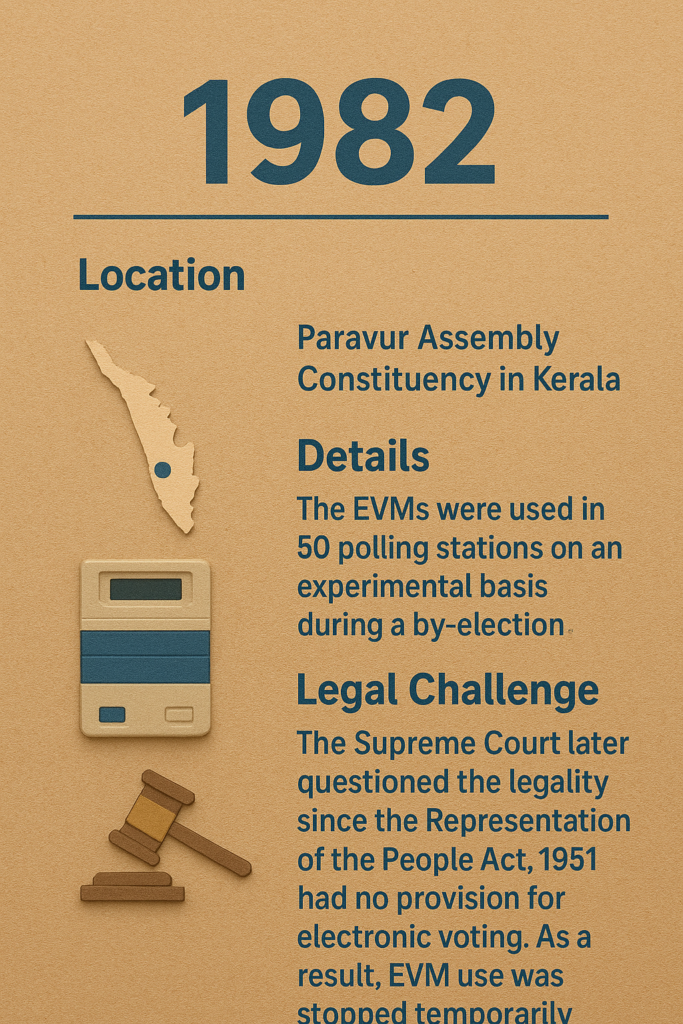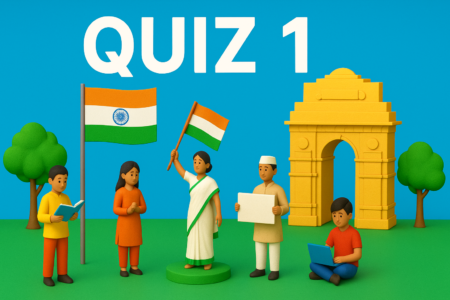In the world’s largest democracy, India, elections are a massive exercise involving millions of voters. To ensure free, fair, and efficient voting, Electronic Voting Machines (EVMs) have played a groundbreaking role. From their first introduction in the 1980s to their widespread adoption today, EVMs have transformed the electoral process. Let’s explore the history, evolution, first use, and present-day developments of EVMs in India in detail.
🌟 What is an Electronic Voting Machine (EVM)?
An Electronic Voting Machine (EVM) is a device designed to record votes electronically, replacing the traditional ballot paper system. Each machine has two main units:
- Control Unit – Kept with the polling officer, used to release a ballot for a voter.
- Balloting Unit – Given to the voter, where the voter presses a button to cast their vote for the candidate of choice.
EVMs are designed to be tamper-proof, portable, and simple, ensuring that voting is faster and counting results are more accurate.
🏛️ Who Brought EVMs to India?
EVMs were first conceptualized and designed by Electronics Corporation of India Limited (ECIL) and Bharat Electronics Limited (BEL) in the late 1970s under the guidance of the Election Commission of India (ECI). The idea of using technology for voting came from the need to reduce ballot paper misuse, eliminate bogus voting, and speed up the counting process.
📜 First Use of EVM in India
- Year of First Use: 1982
- Location: Paravur Assembly Constituency in Kerala
- Details: The EVMs were used in 50 polling stations on an experimental basis during a by-election.
- Legal Challenge: The Supreme Court later questioned the legality since the Representation of the People Act, 1951 had no provision for electronic voting. As a result, EVM use was stopped temporarily.
⚖️ Legalization of EVMs
To formally allow EVMs, the Representation of the People Act, 1951 was amended in 1989, granting legal sanction for electronic voting.

📈 Expansion of EVM Use in India
- 1998: Large-scale experimental use in 16 assembly constituencies across Madhya Pradesh, Rajasthan, and Delhi.
- 2001: Assembly elections in Tamil Nadu, Kerala, Puducherry, and West Bengal used EVMs in several constituencies.
- 2004: A milestone year – for the first time in Indian history, EVMs were used in all 543 Lok Sabha constituencies across the country.
Since then, paper ballots have been completely replaced by EVMs in India.
🔄 Evolution of EVMs: Old vs. New
- First-Generation EVMs (1980s – 2000s): Simple machines with no voter-verified paper trail.
- Second-Generation EVMs: Introduced features to prevent tampering and multiple votes.
- Third-Generation EVMs (2013 onwards):
- Introduction of VVPAT (Voter Verified Paper Audit Trail) system.
- Every time a vote is cast, a paper slip is generated and shown to the voter for 7 seconds before falling into a sealed box.
- Ensures greater transparency and confidence in the electoral process.
📰 Recent News on EVMs
- 2013: The Supreme Court directed the introduction of VVPAT with EVMs.
- 2019 General Elections: All EVMs across India were paired with VVPAT machines, making Indian elections more transparent than ever.
- Recent Updates (2024–2025): The Election Commission continues to use advanced tamper-proof EVMs with VVPATs, and has also started awareness programs to reassure voters about their reliability. Political debates around EVM security and transparency remain ongoing, but the Election Commission of India maintains that EVMs are safe, reliable, and cannot be hacked.
✅ Advantages of EVMs in India
- Eco-friendly: Saves millions of ballot papers.
- Faster Counting: Results are declared within hours instead of days.
- Prevents Invalid Votes: Unlike paper ballots, no invalid or wrongly marked votes.
- Cost-Effective: Reusable machines reduce election costs.
- Secure: Standalone machines not connected to the internet, reducing hacking risks.

🏆 Conclusion
From their first experimental use in Kerala in 1982 to becoming the backbone of Indian elections today, Electronic Voting Machines (EVMs) have brought a digital revolution to democracy. With the integration of VVPAT technology, Indian elections have become more transparent, accurate, and trustworthy.
As the largest democracy in the world, India’s use of EVMs sets a global example of how technology can strengthen democratic processes.







